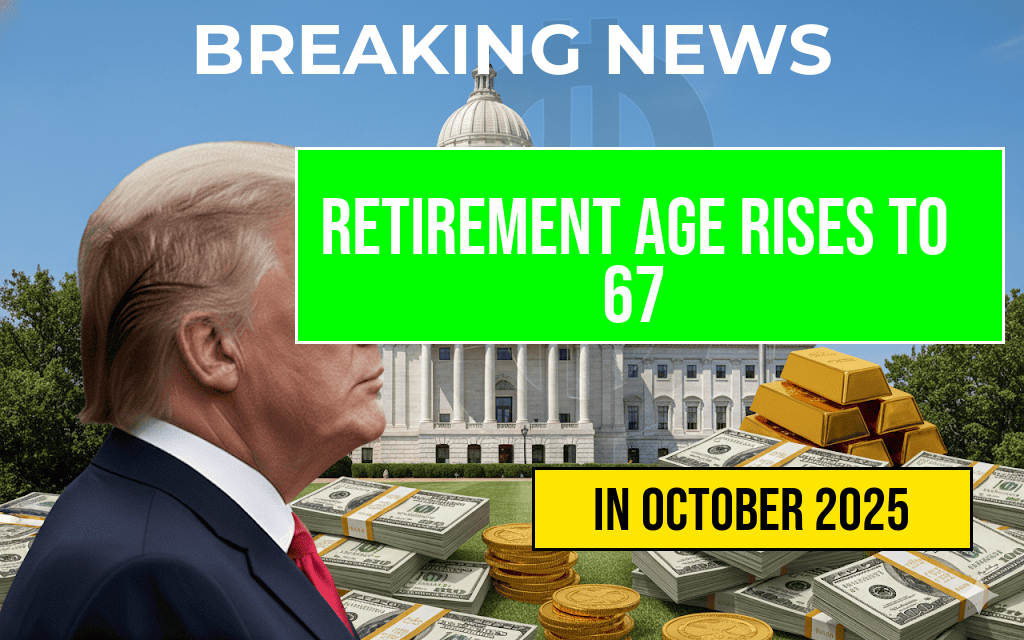The recent decision to raise the Social Security retirement age to 67 marks a significant shift in the landscape of American retirement planning. Implemented gradually over several years, this policy change aims to address long-term financial sustainability of the Social Security system amid increasing life expectancy and demographic shifts. While it aligns with global trends of extending working years, it also raises questions about its impact on retirees, future workforce participation, and economic stability. As millions of Americans approach their retirement years, understanding how this adjustment influences individual planning and national fiscal health becomes crucial.
Understanding the Policy Shift
The adjustment to the retirement age is part of a broader effort to bolster the solvency of the Social Security program, which faces mounting pressure from an aging population and lower birth rates. The new eligibility age gradually increases from 66 to 67 for individuals born in 1960 or later, following legislation passed by Congress several years ago. This phased approach allows current and near-retirees to adapt, but it also signals a fundamental change in how Americans plan their retirement years.
Implications for Retirement Planning
Delayed Benefits and Workforce Dynamics
With the full retirement age rising, many will need to reconsider when they claim benefits. While early retirement options remain available at a reduced rate, the standard age for maximum benefits shifts upward, potentially encouraging longer workforce participation. Employers are also adjusting policies to accommodate older employees, recognizing the economic importance of retaining experienced workers.
Financial Impact on Retirees
- Reduced benefit eligibility for those who opt to claim before age 67.
- Increased savings requirements for those aiming to retire comfortably without Social Security income at younger ages.
- Potential for higher lifetime earnings if individuals choose to work longer, which can positively influence benefit calculations.
According to the Social Security Administration, the policy encourages delayed claiming, which can lead to increased monthly benefits for retirees who work longer.
Economic and Social Considerations
Addressing Demographic Challenges
The shift aims to counterbalance demographic trends such as longer life spans—currently averaging over 78 years—and a declining birth rate, which reduce the ratio of workers to retirees. Extending the eligibility age helps stabilize the financial foundation of the program, ensuring that benefits remain sustainable for future generations.
Potential Challenges for Vulnerable Populations
However, the policy may disproportionately affect those in physically demanding jobs or with health issues, who may find it difficult to continue working into their late 60s. Advocacy groups warn that raising the retirement age could exacerbate economic disparities and pose hurdles for lower-income workers who lack the flexibility or health to extend their careers.
Historical Context and Future Outlook
Raising the retirement age is not unprecedented; similar adjustments took place in other countries facing aging populations, such as Germany and Japan. The U.S. approach, however, reflects a balance between fiscal responsibility and social considerations. Experts suggest that ongoing reforms may include additional measures like adjusting benefit formulas or increasing payroll taxes to further ensure the program’s viability.
Impact on the Broader Economy
Labor Market Trends
The policy shift is expected to influence labor market dynamics, prompting a shift towards longer working lives. This may ease shortages in certain sectors and support economic growth, but could also slow employment opportunities for younger workers if older employees remain in the workforce longer.
Retirement Savings and Personal Wealth
| Current Retirement Age | Adjusted Retirement Age | Additional Savings Needed (approximate) |
|---|---|---|
| 66 | 67 | $15,000 – $25,000 |
| 65 | 66 | $10,000 – $20,000 |
Financial advisors recommend that individuals reassess their retirement savings strategies to accommodate the new timeline, emphasizing the importance of early planning and increased contributions where possible.
Public Response and Ongoing Debates
The policy change has sparked discussions across political and social spectrums. Supporters highlight the necessity of reforms to preserve Social Security for future generations, emphasizing fiscal responsibility. Critics, however, express concern over its fairness, particularly for workers in physically demanding roles or those with limited earning capacity. Advocacy groups continue to push for complementary policies that protect vulnerable populations while maintaining financial sustainability.
As the United States navigates these changes, the emphasis on adaptable retirement planning and continued policy adjustments remains central to ensuring that Americans can retire with dignity and financial security. For more details on Social Security reforms and planning resources, visit Social Security Administration and Wikipedia’s page on Social Security in the United States.
Frequently Asked Questions
What is the new retirement age for Social Security benefits?
The retirement age has been raised to 67 for individuals born in 1960 or later, marking a shift from the previous full retirement age of 66.
How does the increase in retirement age affect eligibility for Social Security benefits?
The increase means that individuals will need to wait until age 67 to receive full benefits. Those who choose to retire earlier may receive reduced benefits, while delaying retirement can increase monthly payouts.
What are the reasons behind raising the retirement age to 67?
The change reflects increased life expectancy and efforts to ensure the long-term sustainability of the Social Security system. It aims to balance the funding needs with the aging population trend.
How might the retirement age increase impact workers and retirees?
Workers may need to plan for longer careers or adjust retirement savings, while retirees might work beyond traditional retirement age or modify their retirement expectations due to the new eligibility age.
Are there any exemptions or special considerations for certain groups regarding the new retirement age?
Some individuals with specific health conditions or career histories may qualify for early benefits or exemptions. It’s advisable to consult the Social Security Administration for personalized guidance.








